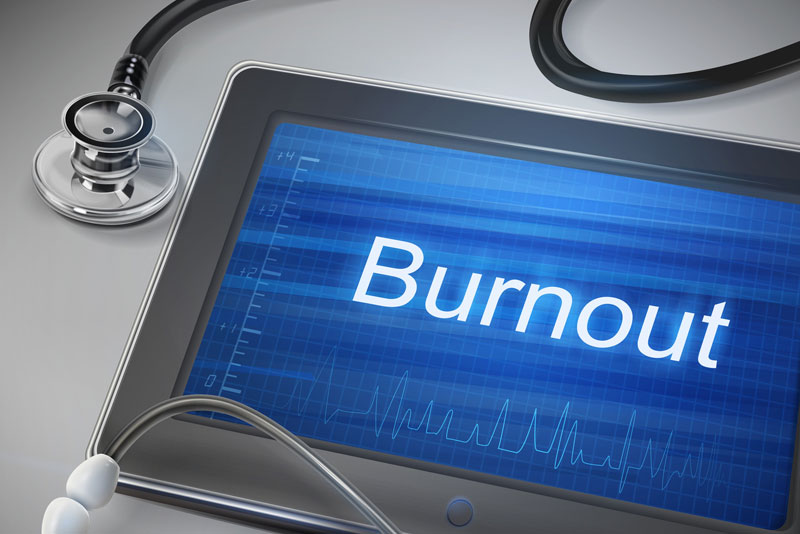
Healthcare organizations still rely on medical transcription services to assist physicians in streamlining EHR documentation. Electronic Health Records are implemented in healthcare units to help physicians improve their practice and productivity. However, many physicians feel that they spend more time on medical documentation rather than with their patients. Pre-occupation with EHR documentation will also extend the patient’s visit time, reduce eye contact with the patients, cause distress in patients and physicians from processing the information, obstruct workflow and eventually lead to physician burnout.
Physician burnout, poor usability of EHR, and EHR-related financial problems are some of the issues that almost all healthcare organizations face and this leads to EHR failures that can put patient safety at risk. According to Fox Group, a health care consulting firm, 20% of EHR system installations could be considered a failure. Another study published by SceinceDirect shows that 50 percent of EHR systems either fail or are not properly utilized. Likewise, there are several studies available online that shows the EHR failure in healthcare organizations. This can be resolved with proper EHR training.
Proper EHR Training
Quality EHR Training is important in a healthcare setup and it can also minimize the chances of physician burnout and improve satisfaction. According to a survey by KLAS, a leading healthcare IT research firm, proper EHR training is essential to increase EHR user satisfaction. According to the researchers, if the healthcare organizations provide good educational opportunity for their healthcare providers, they will be able to master EHR functionality and thereby eliminate many EHR challenges. It is also important to implement some standards to ensure that the clinicians across health systems receive proper EHR training.
The researchers also added that healthcare organizations that provide less than four hours of training session seems to be creating frustration among physicians. These organizations have lower training satisfaction, lower self-reported proficiency and are less likely to report that their EHR helps them deliver quality patient care. So, organizations that invest in EHR training help physicians to easily navigate their EHR systems and also minimize the chances of physician burnout.
Beginning EHR Training at an Early Stage
Providing training to young health care clinicians is the best decision. According to Andrew Symons, MD, MS, vice chair for medical student education in the Department of Family Medicine at the Jacobs School, medical documentation is an important skill that student physician should learn. When students begin clinical rotations in the third year of medical school, they all need to utilize an EHR. This school utilizes Cerner’s EHR system. The students were already transcribing their clinicals in Microsoft Word, after this launch, the students will use Cerner’s EHR educational domain, just like a clinician. It is expected that by the time the students are into their third year, they will be quite familiar with the electronic medical record system.
Super Use EHR Training
Finding out and training the super users and clinical leaders will create a core of knowledgeable staff members who align with the organization’s goals and EHR system requirements. Some super users should have clinical experience and super users should be fully trained about EHR functions. Training a super user early is important to streamline the process of change throughout the organization, including both clinical and technical perspectives. These users help to have an in-depth analysis of the EHR workflow and the system configuration to successfully meet the organizational goals and its client base.
Remote Online EHR Training
With the outbreak of COVID-19, remote learning and remote working has become more popular than ever. This has also made hospitals and EHR vendors to be more creative in forming new ideas because of social distancing and stay-at-home restrictions. Due to travel restrictions and social distancing, healthcare providers conducting an EHR implementation during COVID-19 had to adjust to the lack of in-person training.
At Valley Children’s Healthcare in California, they transformed their on-site command center into a virtual helpline for its clinicians and replaced in-person consultants to provide aid during training sessions. Joel Brownell, MD, vice president and chief medical information officer at Valley Children’s Healthcare said that “One of the things that was critical for success was an easily implemented screen sharing technology. If we had used solely telephone support, rollout would have failed”. So, in short, EHR training can be a long process but it makes a huge positive impact on the healthcare organizations.
The state of quandary created in healthcare systems by EHR documentation-related challenges can be resolved by utilizing medical transcription solutions. It allows physicians to dictate the patient’s notes and the transcriptionist can transcribe the dictation, make necessary corrections and transform it into a well-written patient health record with accurate clinical facts and codes. Once this is done, the codes must be recorded in the EHR, and this should be reviewed by the physicians to ensure that the medical record is error-free. For efficient documentation of patient’s record the best option is to hire a medical transcriptionist service. They transcribe patient’s notes with top-notch quality and accuracy. This will help the physicians spend more time consulting patients and deliver quality care.


